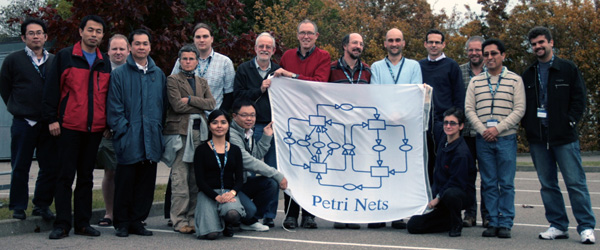
The CPN group at Aarhus University has been the home for the development of Coloured Petri Nets over the last 30 years. The group is considered to be one of the world leaders within the theory and application of high-level Petri Nets. It has written several text books and numerous research papers. Moreover it has developed a computer tool CPN Tools with 10,000 licenses in 150 countries.
For the moment the group is inactive, since all three senior members have got other job assignments.
Coloured Petri Nets (CP-nets or CPNs) is a graphical language for constructing models of concurrent systems and analysing their properties. Petri nets provide the foundation of the graphical notation and the basic primitives for modelling concurrency, communication, and synchronisation. A functional programming language Standard ML provides the primitives for the definition of data types, for describing data manipulation, and for creating compact and parameterisable models.
CP-nets is a supplement to existing modelling languages and methodologies (such as UML) and can be used together with these or integrated into them. Typical application domains are communication protocols, data networks, distributed algorithms, embedded systems, business processes, workflows, manufacturing systems, and multi-agent systems.
CPN models are used to model and specify the behaviour of concurrent and distributed systems. An interactive simulation provides a way to ‘walk through’ a CPN model, investigating different scenarios in detail and checking whether the model works as expected. Automatic simulation is similar to program execution and the purpose is to execute the CPN model as fast and efficiently as possible, without detailed human interaction and inspection.
CP-nets include a concept of time that makes it possible to capture the time taken by events in the system. This means that CP-nets can be applied to simulation-based performance analysis, where performance measures such as delays, throughput, and queue lengths in the system are investigated.
CPN models are formal and hence they can be used to prove properties about the modelled systems. This is e.g. done by model checking based on state space exploration.
The use of CP-nets and their analysis methods are supported by an elaborated set of computer tools called CPN Tools. This tool set has been developed at Aarhus University since year 2000.
It has more than 10,000 licenses in nearly 150 different countries. From the autumn of 2010 CPN Tools are transferred to the AIS group, Eindhoven University of Technology, The Netherlands.